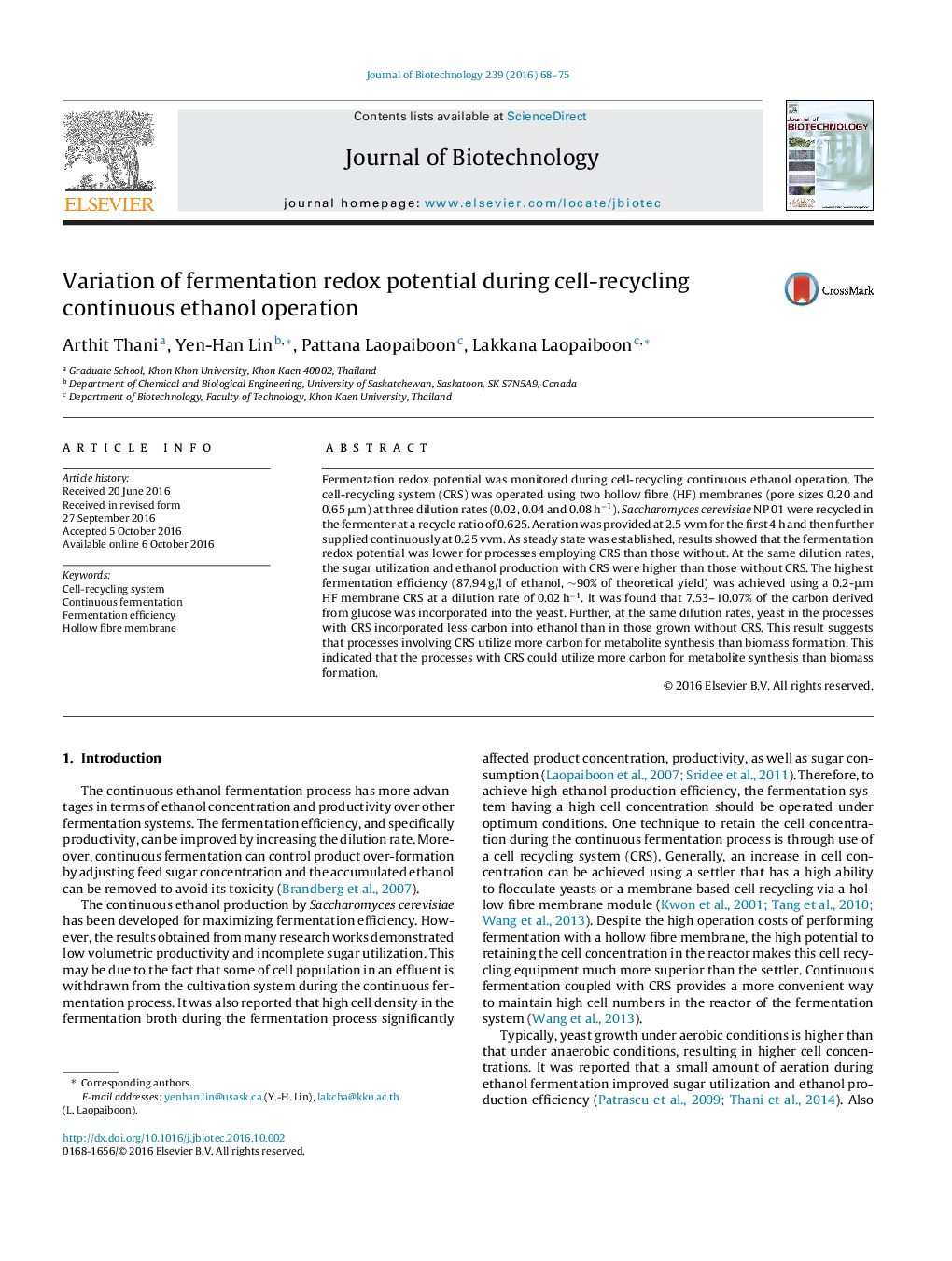| کد مقاله | کد نشریه | سال انتشار | مقاله انگلیسی | نسخه تمام متن |
|---|---|---|---|---|
| 6452249 | 1417005 | 2016 | 8 صفحه PDF | دانلود رایگان |
- Fermentation redox potentials are lowered as cell-recycling system (CRS) was installed.
- Less carbon was incorporated into yeast as CRS was implemented, resulting in higher ethanol production.
- The improvement of ethanol production directly relates to dilution rate under CRS processes.
- The use of 0.2-μm CRS resulted in 30% increase in ethanol concentration (PE) compared with 0.65-μm CRS (PE = 48.75 g/l at dilution rate of 0.08 hâ1).
Fermentation redox potential was monitored during cell-recycling continuous ethanol operation. The cell-recycling system (CRS) was operated using two hollow fibre (HF) membranes (pore sizes 0.20 and 0.65 μm) at three dilution rates (0.02, 0.04 and 0.08 hâ1). Saccharomyces cerevisiae NP 01 were recycled in the fermenter at a recycle ratio of 0.625. Aeration was provided at 2.5 vvm for the first 4 h and then further supplied continuously at 0.25 vvm. As steady state was established, results showed that the fermentation redox potential was lower for processes employing CRS than those without. At the same dilution rates, the sugar utilization and ethanol production with CRS were higher than those without CRS. The highest fermentation efficiency (87.94 g/l of ethanol, â¼90% of theoretical yield) was achieved using a 0.2-μm HF membrane CRS at a dilution rate of 0.02 hâ1. It was found that 7.53-10.07% of the carbon derived from glucose was incorporated into the yeast. Further, at the same dilution rates, yeast in the processes with CRS incorporated less carbon into ethanol than in those grown without CRS. This result suggests that processes involving CRS utilize more carbon for metabolite synthesis than biomass formation. This indicated that the processes with CRS could utilize more carbon for metabolite synthesis than biomass formation.
Journal: Journal of Biotechnology - Volume 239, 10 December 2016, Pages 68-75
